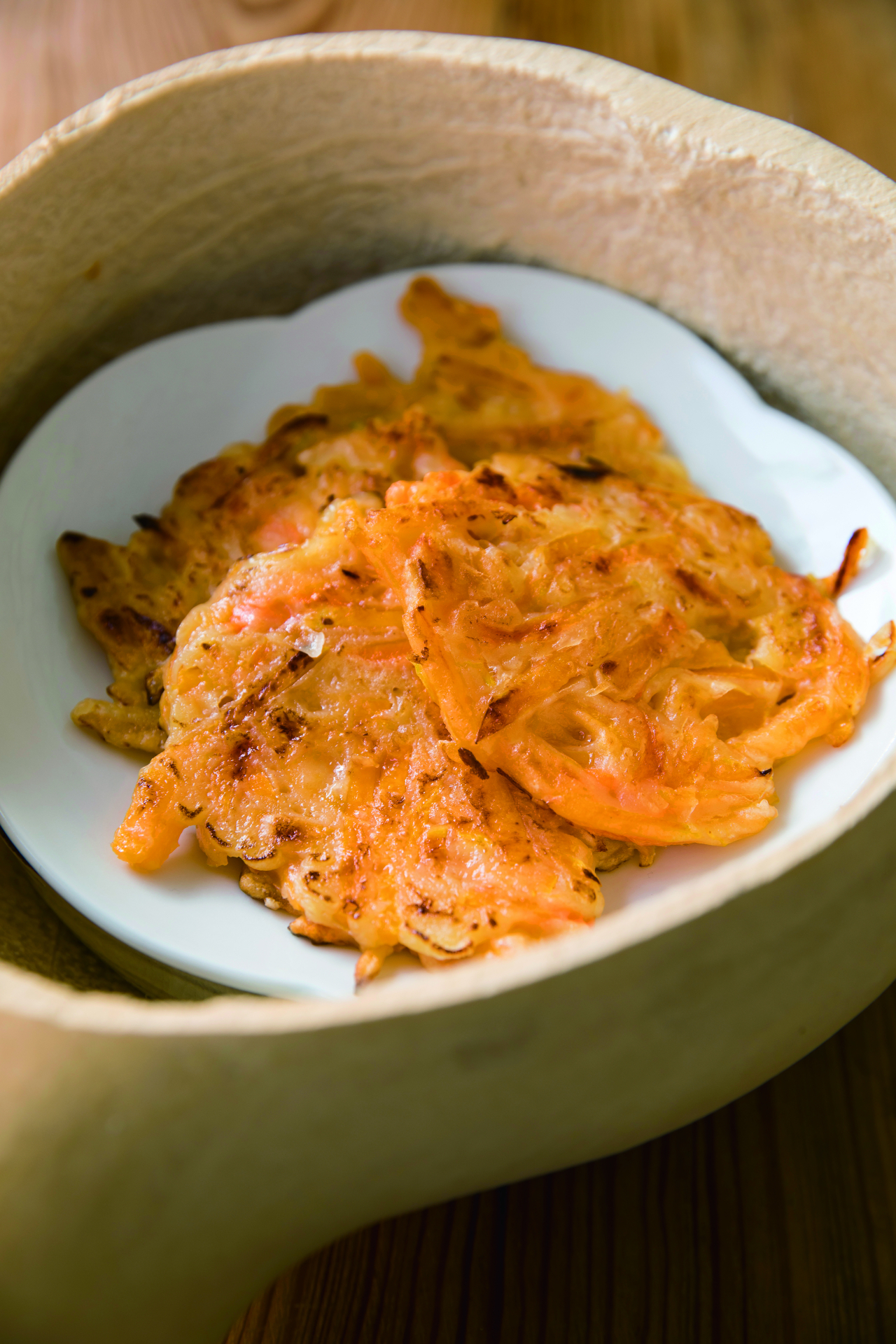
Society attributes a variety of adjectives to temple food -- healthy, natural, clean, etc. Are such words accurate? The Ven. Dorim disagrees, saying, “Temple food is not that grand.”
Monastics use the same ingredients that ordinary Koreans used to eat in leaner times and prepare them in ways to enhance the taste. Temple food is neither extravagant nor special. The most important factor in temple food is the person who prepares it, according to the Ven. Dorim.
Traditionally, temples must make enough food using limited ingredients to feed a large number of monastics and make it as tasty as possible.
Temple cooks went to great pains to overcome such obstacles. How can one make tasty food under such limited conditions? Wouldn’t it be best to draw out the natural tastes to the fullest? To prepare food well ultimately requires wisdom. The Ven. Dorim said if the person preparing the food is faithful to his or her duty, wisdom naturally arises.
The Ven. Dorim cited the example of mushrooms, one of the most used ingredients in temple food. In order to draw out maximum flavor, she prefers to partially dry them.
She revealed that her own secret formula for tastier food is in the flavor of her soy sauce. She uses sap extracted from gorosoe trees -- a type of maple tree -- to make her soy sauce.
The only problem is the steep price of gorosoe, which bars many people from using it. Nevertheless, the Ven. Dorim uses it in her soy sauce because it makes it less salty.
Another secret the Ven. Dorim revealed is her recipe for chaesu, or vegetable broth. Instead of a meat-based broth produced by boiling meat or bones, temple food uses vegetable-based broth produced by boiling assorted vegetables. When she makes jeon -- Korean savory pancakes -- she uses vegetable broth for the batter.
For squash jeon, the Ven. Dorim chose butternut squash.
Originally from South America, butternut squash is one of the most loved squashes anywhere in the world.
With a thin skin and softer inside, it is easier to cook, and it has a sweet taste with a nutty aroma. It is also low in calories and helps lower cholesterol, making it a popular diet food. Butternut squash has a brighter color than the more commonly used variety, as well as a firmer texture in the mouth. Even without soy sauce for dipping, it is still flavorful.
Butternut squash jeon (Hobakjeon)
Ingredients
- 300 grams butternut squash
- 1 cup flour
Directions
1. Peel the butternut squash, remove seeds and cut into thin strips.
2. Add flour and mix well. Add a pinch of salt.
3. Oil the pan and fry the squash golden brown, top and bottom.
Provided by the Cultural Corps of Korean Buddhism
-------------------------------------------------------------------
Temple food is food of the ascetics who express gratitude for all forms of life and wish for peace for the whole world. The Cultural Corps of Korean Buddhism operates the Korean Temple Food Center where guests can learn about and experience temple food. -- Ed.
![[Exclusive] Korean military set to ban iPhones over 'security' concerns](http://res.heraldm.com/phpwas/restmb_idxmake.php?idx=645&simg=/content/image/2024/04/23/20240423050599_0.jpg&u=20240423183955)

![[Graphic News] 77% of young Koreans still financially dependent](http://res.heraldm.com/phpwas/restmb_idxmake.php?idx=645&simg=/content/image/2024/04/22/20240422050762_0.gif&u=)


